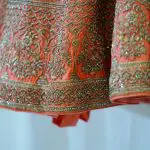Do you know about clothes?. Yes, everyone knows about clothes and fabric. Clothes are essential for keeping us warm in the winter and cool in the summer, but what many people don’t realize is that they also play an important role in protecting us from the elements.
Clothing can help to keep us dry when it rains or wet when it sprinkles, which is why fabrics that absorb water are so valuable.
Table of Contents
Which Fabric Absorbs the Least Water?
Polyester and cotton blend fabrics were found to be the most efficient in terms of expelling water. This makes them an ideal fabric for anti-water activities, as they don’t absorb a lot of water and get rid of it very quickly. Wool was observed to be the worse at repelling water out of all three specimens tested.
Cotton was found to be more effective than wool in repelling moisture, but not as much as the polyester/cotton blend. The polyester/cotton blend ranked the lowest in terms of absorbing water and releasing it slowly.
This information can be helpful for people who are looking to purchase clothing that will keep them dry in the rain or wet when it sprinkles. It’s also great news for those of us who love wearing clothes but hate getting our clothes wet!
Other Fabrics that Absorbs Less Water
With the increased popularity of outdoor activities, such as swimming and hiking, it is no surprise that so many people are looking for clothing that will help them stay dry. Synthetic fibers like polyethylene, polypropylene, and polyester typically do not absorb water which can make these materials unsuitable for most types of clothes. However, there are ways to modify these fabrics so that they become moisture-wicking garments.
Two layers of fabric are usually used; one layer absorbs the moisture while the other repels it. This type of garment is easy to prepare once you have applied a water repellent treatment followed by heat processing your textile. Resistance textures also exist which offer greater protection from sweat and raindrops while keeping you cool in hot weather conditions or during rigorous activity.
Although synthetic fiber may not be ideal for all applications wearers often find this type of clothing more comfortable than regular cotton because they don’t get sweaty quickly in warm climates or when exercising vigorously.
So if you’re someone who hates getting your clothes wet, or you’re looking for a clothing option that will keep you dry in the rain, consider investing in a polyester/cotton blend fabric. It may not be the most stylish choice, but it sure is one of the most efficient!
Why Are Polyester and Cotton Blend Fabrics Better at Expelling Water than Other Types of Fabrics?
Polyester and cotton blend fabrics are made up of a combination of polyester fibers and natural fibers. The polyester fiber is hydrophobic, which means that it doesn’t absorb water very easily. It also has the ability to release moisture quickly when exposed to airflow.
Natural fibers like cotton have hydrophilic properties, meaning that they attract water molecules from the surrounding environment more readily than other types of fabric do. This makes them great at keeping you dry in wet conditions but not so good at getting rid of the moisture once it’s on your skin.
What Are the Benefits of Fabrics that Absorb the Least Water?
Clothes that absorb the least water are great for activities like hiking, camping, and other outdoor sports. They’re also ideal for people who live in areas where it rains a lot or has to deal with wet weather on a regular basis.
One of the biggest benefits of clothing that absorbs less water is that it’s much more comfortable to wear. Sweat and raindrops will not be able to easily accumulate on your skin, which can lead to discomfort and fatigue. Additionally, these garments are often cooler in hot weather conditions or during strenuous activity.
What Are the Drawbacks of This Kind of Fabrics?
One of the main drawbacks of clothing that absorbs less water is that it can be more difficult to keep clean. Dirt, sweat, and other debris will tend to accumulate on the fabric more easily, which can lead to odor problems or even wear and tear on the garment over time. Additionally, these types of fabrics are not as breathable as other options so they may become stuffy in hot weather conditions.
How Do Different Fabrics Perform when It Comes to Absorbing Water?
There are a few different factors that affect how well a fabric absorbs water. The type of fiber, the amount of moisture present, and the way in which the garment is constructed all play a role.
Polyester fabrics usually absorb water because they have both hydrophobic and hydrophilic properties. This means that they can quickly release moisture when it’s exposed to airflow, but they also tend to be resistant to stains and odors.
Fabrics made from 100% cotton are not as good at absorbing water as polyester or cotton blend fabrics, but they’re still effective at doing so. This is because cotton has a high absorbency rate for water molecules compared to other types of fabric.
Fabrics that are made from a combination of cotton and polyester fibers tend to be the best at absorbing water. They have both the hydrophobic and hydrophilic properties of each fiber, which makes them very effective at releasing moisture quickly. Additionally, these fabrics are often more durable than those made from just one type of fiber.
Overall, there is no single fabric that is better than all others when it comes to absorbing water. It depends on the specific situation and the type of fabric being used.
Conclusion
Polyester and cotton blend fabrics are great for keeping you dry in wet conditions because they don’t absorb water very easily, but also release it quickly when exposed to airflow. They’re an ideal fabric for anti-water activities like hiking or camping, as well as any other activity that involves getting wet from rain or splashing around in puddles!
- Does Dri Fit Keep You Cool - March 5, 2024
- Can You Silkscreen on Polyester - March 5, 2024
- How Many Teeth in a Zipper - March 5, 2024



